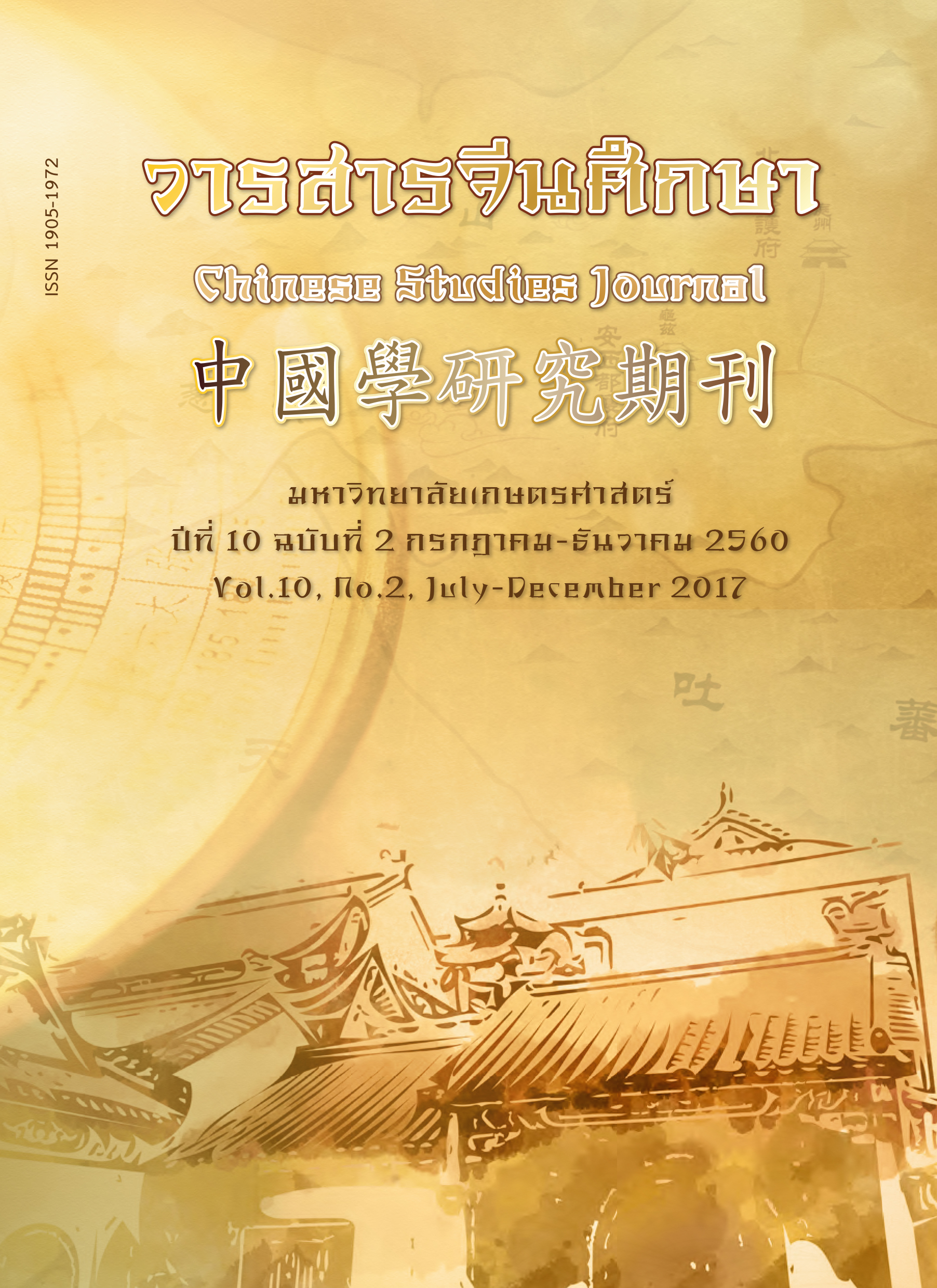The Study of Meaning and Usage of Problematic Classifiersin Mandarin Chinese in Thai University Students ----A case study of Chinese major fourth-year university students in Chiang Mai
Main Article Content
Abstract
This research has two objectives: first, to classify, study the meaning and analyze the classifiers used in Mandarin that Thai learners should know and use frequently; second, to study the types of classifiers in Mandarin that are often incorrectly used by Thai students.The study found that The types of Chinese classifiers that Thai students should know are divided into 8 types: 1. Classifiers that have the same pronunciation but have different meanings and usage, such as 支 (zhī), 只 (zhī), 枝 (zhī) 2. classifiers that have similar meanings and usage, for example, 根 (gēn), 支 (zhī), 条 (tiáo) 3. Classifiers whose Chinese characters are similar, but they have different meanings and usage, such as 篇 (piān), 遍(biàn)4. the same noun type, but used with different classifiers, such as the classifiers used for animal nouns, which are: 条 (tiáo), 只 (zhī), 匹(pī) 5.classifiers that have the same meaning, but there are different senses of meaning, such as个(gè) and 位 (wèi). 6. complex uses of the classifier 个 (gè). 7. classifiers that represent different units of measurement, such as 公里 (gōnglǐ) mile, 米(mǐ) meters. 8. classifiers that do not fit into any of the above groups. However, they appear in the textbooks and the Chinese language test preparation books (HSK) class 1-6, such as 瓶 (píng), 岁(suì), 倍 (bèi), 层(céng).
The study of the classification of the classifiers in Mandarin that are often incorrectly used by Thai students. It is found out that classifiers that have similar meanings and usage, such as 栋 (dòng), are most often misused by 91% of the students. They are confused with the terms 所(suǒ), 家(jiā) and 座(zuò). The same noun types, but are used with different classifiers, such as the classifiers used for animal nouns: 条 (tiáo) which are misused by 48% of the students and are confused with the word 只(zhī). Classifiers that have the same pronunciation but different in writing and meaning, for example棵(kē), are misused by 71% of the students and are confused with the word 颗(kē). Classifiers whose Chinese characters are similar, but they have different meanings and usage, such as 副(fù), are misused by 62% of the students and are confused with 幅(fú), etc.
Article Details
ผลงานทางวิชาการที่ลงตีพิมพ์ในวารสารจีนศึกษา มหาวิทยาลัยเกษตรศาสตร์ เป็นลิขสิทธิ์ของผู้เขียนหรือผู้แปลผลงานนั้น หากนำลงในวารสารจีนศึกษาเป็นครั้งแรก เจ้าของผลงานสามารถนำไปตีพิมพ์ซ้ำในวารสารหรือหนังสืออื่นได้โดยมิต้องแจ้งให้ทราบล่วงหน้า แต่หากผลงานที่ได้รับพิจารณานำลงในวารสารจีนศึกษา เป็นผลงานที่เคยตีพิมพ์ที่อื่นมาก่อนเจ้าของผลงานต้องจัดการเรื่องปัญหาลิขสิทธิ์กับแหล่งพิมพ์แรกเอง หากเกิดปัญหาทางกฎหมาย ถือว่าไม่อยู่ในความรับผิดชอบของวารสารจีนศึกษา มหาวิทยาลัยเกษตรศาสตร์ ทั้งนี้ ความคิดเห็นต่างๆ ในบทความเป็นความคิดเห็นส่วนตัวของผู้เขียน ไม่เกี่ยวกับกองบรรณาธิการวารสารจีนศึกษา มหาวิทยาลัยเกษตรศาสตร์


